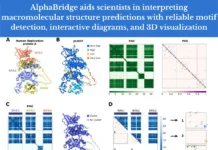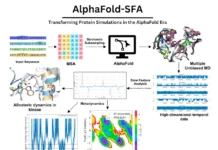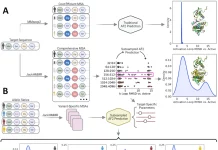Gaining insight into the relationship of the Peptide sequence (the amino acid sequence) and their structure (the way they fold and interact) is a difficult task. Already existing methods are not up to the mark. Thanks to the ever-evolving field of protein language models for providing us with a new solution called PepHarmony. Developed by researchers from Jilin University, PepHarmony is a Multi-View Contrastive Learning Framework for Peptide Sequence Representation. The model’s performance attests to its robustness and accuracy and highlights its potential to facilitate advanced protein analysis and drug discovery research.
Introduction
The building blocks of proteins, i.e., amino acids, are arranged in short chains called peptides. While proteins might have hundreds or even thousands of amino acids, they usually only have two to fifty. Peptides are essential in a variety of biological and therapeutic applications due to their special qualities. The basic relationship between a peptide’s sequence and structure provides the basis for understanding its function and potential applications. The unique characteristics of peptides make it difficult for computational models to adequately describe them, but it is crucial for advancement in drug discovery and protein engineering. Traditional approaches focus on peptide sequences or their structures independently and fail to capture their relationships fully.
Offering unprecedented data and presenting fresh avenues for peptide research, large-scale protein databases, such as the Protein Data Bank (PDB) and the ground-breaking AlphaFold DB, have recently surfaced. This is where the new research PepHarmony enters the picture, offering a fresh method for unlocking the secrets of peptides. In tasks such as predicting the interaction between proteins and the ease of dissolution of peptides in water, PepHarmony performs better than its competitors. It opens up fascinating new avenues for biotechnology and medicine by enabling the design and engineering of peptides with customized characteristics. Consider peptides that can specifically target cancer cells or deliver medications to sick regions directly. These findings open the door for new approaches to peptide representation and advancements in machine learning, especially for models pre-trained using proteins.
PepHarmony makes use of contrastive learning, a method that trains the model to recognize nuances in the correlations and patterns between sequence and structure by contrasting different peptide sequences against each other.
Effectiveness of Contrastive Learning
- Surpasses baseline and optimized models: The best overall performance is achieved by PepHarmonycl (contrastive loss alone) on four downstream tasks (CPP, Solubility, Affinity, Self-Contact).
- Captures the intricate relationship between form and sequence: Peptide characteristics can be accurately predicted by combining structure and sequence information.
- Excellent data is essential: When compared to lower confidence datasets and data mixing methodologies, the AF90 dataset with the greatest confidence level consistently produces better results.
By doing so, PepHarmony can develop a comprehensive picture of the peptide’s “essence.”
Understanding the intricate interplay between protein sequences and structures is pivotal in computational biology and bioinformatics. Recent advancements have led to the development of various computational models, each focusing on different aspects of protein analysis, for example:
1. Protein Language Models Based on Sequences
- Protein-specific models such as BERT and GPT (e.g., ESM) are highly effective in gathering sequence information and predicting functionality/interactions.
- Because they ignore the critical significance of three-dimensional structures, they are unable to fully anticipate the behavior of proteins.
2. Pretrained Models of Structure-based Proteins
- With the help of 3D conformational models, such as AlphaFold, protein structures can be reliably predicted.
- To gain a sophisticated understanding of function and interaction, they make use of chemical and geographical data.
- But they miss out on important information that can be gleaned from sequencing data.
3. Models of Sequence Infusion and Structure
- In light of the shortcomings of singular viewpoints, current models combine both structure and sequence.
- Improved precision in functions, interactions, and even the discovery of new proteins is demonstrated by examples such as ESM-GearNet.
Unlike previous research, PepHarmony focuses exclusively on peptides as opposed to proteins.
Methodology in Peptide Representation Model
The model treats sequence and structure as complimentary viewpoints for every peptide, employing a multi-view contrastive learning methodology. Using two pre-trained models—GearNet for structure and ESM for sequence—it learns via self-supervised learning (SSL) with two types of losses: generative and contrastive.
Sequence Encoder:
- Masked language modeling is used as pre-training for ESM, a transformer-based sequence encoder.
- The sequence encoder (ESMt12 version) is initialized by ESM-trained parameters on proteins.
- This decision uses PLMs such as ESM, which are useful for extracting features from shorter sequences, such as peptides.
Structure Encoder:
- A structure-based encoder called GearNet makes use of chemical and geographical data.
- Compared and pre-trained two versions:
- GearNetcons: maximizes the mutual information between views by optimizing contrastive loss.
- GearNetdiff: combines sequence-structure modeling with denoising diffusion models.
- Different edge types, such as sequential, radius, and K-nearest neighbor, are used to design peptide graphs that express geometric characteristics.
- Per-residue and whole-peptide representations are learned via relational graph convolutional neural networks.
Learning Tasks between Sequence and Structure
At the training stage, the model conducted self-supervised learning. Following the framework, it employed two losses: a contrastive one and a generative one. These losses focus on different representation learning aspects.
1. Contrastive Learning
- Sequence-structure pairs for the same peptide are positive; otherwise, they are negative. Positive and negative pairs are defined from an inter-data level.
- Positive pairs are aligned, and the InfoNCE objective function contrasts negative pairs.
- The model is encouraged to learn representations that capture the link between sequence and structure.
2. Generative Learning
- Attempts to self-construct each data point to develop effective representation.
- The variational representation reconstruction (VRR) loss is employed using the GraphMVP framework.
- VRR does not focus on data itself; rather, it reconstructs representations (hy).
- This encourages important geometry/topology information from the structure to be encoded into the sequence representation.
The methodology effectively integrates sequence and structure information into the peptide representation by combining several pre-trained models, self-supervised learning techniques, and well-crafted learning problems.
Future Prospective
- Customization of PepHarmony to fit particular uses and assignments that is, making Domain-specific modifications.
- To improve knowledge, incorporate more comprehensive biological data for additional data integration.
- Making PepHarmony more known and becoming knowledgeable about internal operations for increasing Examining interpretability.
- PepHarmony can be used in protein engineering, drug discovery, and other areas.
Conclusion
Peptide sequence representation has advanced significantly as a result of recent developments in protein language models. Because it is challenging to capture the complex and occasionally unstable structures of peptides, pre-trained models customized for peptide-specific needs should still be addressed despite substantial studies in this sector. To cover a wide range of peptide sequences and structures, carefully choose datasets from the AlphaFold database and the Protein Data Bank (PDB). Comparing the experimental results with the baseline and refined models, PepHarmony’s remarkable ability to capture the complex link between peptide sequences and structures is highlighted.
PepHarmony is a multi-view contrastive learning model that performs exceptionally well and provides insightful information for drug discovery and peptide analysis.
Benefits of using PepHarmony:
- Strong predictive abilities: Accurate predictions are shown by high ACC, F1 score, and ROC-AUC across all tests.
- Useful for highly sequence-similar data: Because of their higher structural integration, peptides and protein families can be distinguished even when their sequences are similar.
- Possibility of several uses: beneficial for drug discovery, proteomic research, and other domains needing precise peptide representation.
PepHarmony is a potent model that uses contrastive learning to integrate structural information efficiently to learn peptide representations. It is a potential tool for many applications in proteome research and drug development due to its exceptional performance and interpretability. The Health Informatics Lab website and GitHub also host the model’s open-source code, encouraging additional research and cooperation and paving the path for a time when peptides’ enormous potential will be fully realized.
Article Source: Reference Paper | The researchers working on PepHarmony have made all the source code utilized in the study publicly accessible via GitHub or http://www.healthinformaticslab.org/supp/
Important Note: arXiv releases preprints that have not yet undergone peer review. As a result, it is important to note that these papers should not be considered conclusive evidence, nor should they be used to direct clinical practice or influence health-related behavior. It is also important to understand that the information presented in these papers is not yet considered established or confirmed.
Follow Us!
Learn More:
Anchal is a consulting scientific writing intern at CBIRT with a passion for bioinformatics and its miracles. She is pursuing an MTech in Bioinformatics from Delhi Technological University, Delhi. Through engaging prose, she invites readers to explore the captivating world of bioinformatics, showcasing its groundbreaking contributions to understanding the mysteries of life. Besides science, she enjoys reading and painting.

















Grateful for the useful and educational insights in your blog.